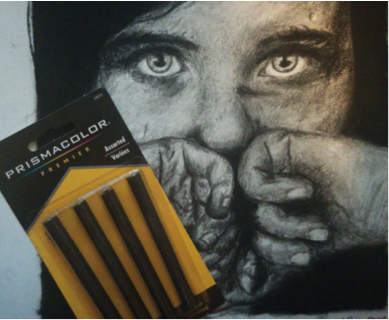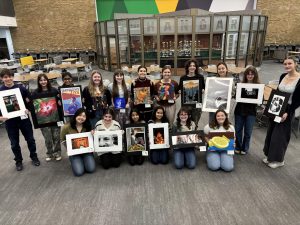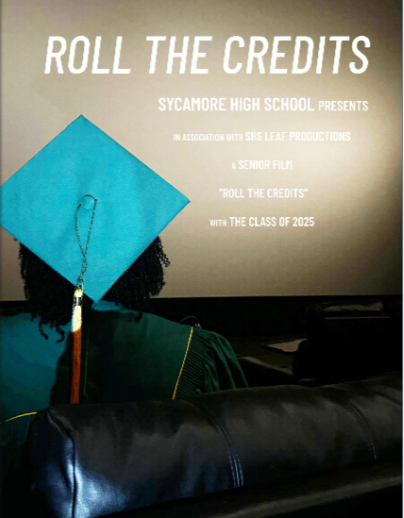Different art mediums bring unique benefits

The art piece shown here is done fully with charcoal. It can get pitch black, like on the edges of the piece, or very light and blended, which is shown on the face. Charcoal can come in sticks, like shown, or in pencil form.
December 4, 2014
Art encompasses a broad range of materials, techniques, and processes. Even in the “traditional” perspective, the materials associated with drawing and painting each have their own benefit and value.
Graphite pencil
Pencil is one of the more common types of drawings done. This medium is one of the easier materials to master and control, and techniques for shading range from blending to crosshatching.
Pencils come in different hardnesses. The lightest are labeled with “h’s”, such as 3h, 2h, etc., and the darkest are labeled with “b’s”, such as 4b and 6b.
“My favorite medium is pencil because it is really easy to draw with and does not take too much time,” freshman Julia Kolnicki said.
Charcoal
Unlike graphite, charcoal can get a much darker shade of black than pencils can. It is harder to control and does not erase as easily as pencil. It also has a very different texture compared to other mediums.
Charcoal is ideal for quick sketches and figure drawings. Like pencil, charcoal comes in a variety of different darknesses. When a charcoal is soft or hard, the lines and shading are dark and soft respectively.
Pastels
Pastels can come in different forms, one being oil pastels, which have a similar feel to crayon, and the other being chalk pastels, which are much more powdery. Unlike charcoal, pastels come in different colors instead of just black and white.
Using the tip, side, or edge of the pastel can produce different textures while different techniques, like crosshatching or layering, can build up layers of color.
“Oil pastels blend nicely together, move smoothly, and are easier to master. It is an easier technique to master because there is not much detail involved,” freshman Skylar Ziegler said.
Watercolor
Watercolors are one of the most difficult mediums to master. Once the paint is on the paper, the pigment will not come off easily. They are very hard to control, but when mastered, they can create beautiful art.
Some techniques used with watercolors are flat washes, graded washes, color lifting, and wet on wet.
Oil Paints
Like the name says, these paints are oil-based and are usually paired with turpenoid or linseed oil. Oil paints take a long time to dry; but, the beauty of this medium is that you can paint right over a layer of color without it showing through.
Acrylic Paint
Contrary to oil paints, acrylic is water-based. So, to dilute the pigment or clean brushes, water is the way to go. It dries very quickly and is most often used in crafts and with younger children.
But be careful. If this paint gets on your clothes, it is never coming off!
Pen and Ink
From sharpies to graphic pens to India ink, there are many different ways to go. A common type of art piece is drawing zentangles, very elaborate and detailed doodles that can be done with a mere sharpie.
For graphic artists or manga drawing, there are special pens that can be very thin for detail or very bold for coloring in.
“My favorite is the sharpie. It is really smooth to draw with and fun to draw patterns and optical illusions,” freshman Jodie Lawson said.
India ink can be used like watercolors, the only difference being the absence of color. Similar to charcoal, India ink can get extremely dark or light, and is a tad bit harder to control.






